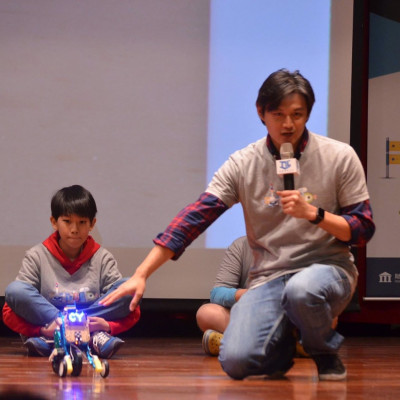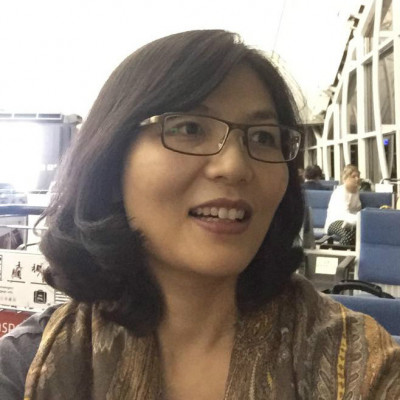Sessions / Bilingual Teaching Materials and Pedagogy
Lesson Plan Design Principles and Key Points of Bilingual Teaching in Life Curriculum #2561
Having served as a review committee member for the results of the bilingual teaching plan and application plan, and as a supervising professor in several schools in some areas of primary and secondary schools for nearly one year, I will be sharing some guiding principles of Life Curriculum Design. In the process of reviewing and preparing lessons with each school, I found that most of the teachers in schools that implement bilingual teaching in the Life Curriculum have a background in English. Many teachers are less familiar with Life Curriculum. Therefore, they are prone to encounter difficulties when designing teaching plans. To help teachers better understand the life curriculum, I will briefly introduce the important concepts and principles of the Life Curriculum, through the "Life Curriculum" literacy-oriented teaching model map, which includes description 1) Life Curriculum view of children's learning; 2) The characteristics of students at this learning stage; 3) Basic concept of Life Curriculum, and 4) Key points when designing teaching plans. The basic principles of the English integration Life Curriculum course will be explained, providing educators resources and suggestions for bilingual teaching of Life Curriculum.
Voice, agency and identity via bilingualism in ESL writing classroom #2515
This present study explores the functions of L1 as a language resource in an L2 collaborative writing group. Specifically, it aims to determine how the interlocutors’ first language produces power and identity in the production of knowledge during the pre-writing stage. Participated by selected junior high school students in a premier public high school in the Division of Cavite in the Philippines, the researcher recorded and transcribed the small group’s conversations into episodes to examine the linguistic choice of the participants that elicit power and identity building using their first language in an L2 learning space. Guided and influenced by Vygotsky’s sociocultural theory, which highlights language as a cultural artifact that upholds dialectical relation between the learners and the social world, results revealed that the students’ L1 could serve as a language resource in sustaining their voice necessary to build power and identity. This is manifested by the learners’ use of code-switching and code-mixing in ESL classrooms to empower them as significant members of the learning groups. Interestingly, pure L1 also proved that it has functions to play in producing and sharing authentic knowledge necessary to learn L2 and to establish their learning identity and agency. Hence, this study proves that local and authentic knowledge reflected in a bilingual learning engagement produces cohesiveness in L2 writing.
How can we add more value to bilingual PE lessons? Variability of practice is critical in quality physical activity for children #2558
Since the Bilingual living environment has become a vital national policy, county and city government and research centers have conducted research and develop teaching materials to achieve the main goal. In recent years, more subjects have been putting effort into learning through foreign languages. Physical Education (PE) is often the subject chosen for applying multilingual initiatives based on content and language integrated learning (CLIL). CLIL provides students with enhanced opportunities to acquire skills and knowledge in additional languages, while learning a variety of subjects. Student can learn a second language through daily life and natural patterns, since Physical Education is taught in English. How can we add more value to bilingual PE lessons, not just motor skill development and language, but also achieve competency? Variability of practice is critical in quality physical activity for children, and it increases the formative value of physical activities. The textbook of Taipei municipal for PE covers new curriculum, provides a work plan, and explains how to plan PE-in-CLIL units and lessons. In the text book, we consider the beneficial effect of PA level, motor development, and variability of practice to develop competencies with international perspective and cultivate a new generation of citizens.
Teaching Young Learners Mathematics: A CLIL Approach #2520
As literature indicates, it can be argued that mathematics is a language because it has its own set of rules, and with a finite number of symbols an infinite number of utterances can be created. Students need to master this language in order to read, understand, write down, and discuss ideas. In a CLIL lesson, both the learning of mathematics concept and the simultaneous learning of a second or foreign language is emphasized. This present paper will examine the following two aspects: How to scaffold young learners to process the mathematics concept through a second language? How to guide young learners to learn the mathematics language?
The development of elementary Life Curriculum bilingual teaching materials #2522
Wenzao University of Languages has established a bilingual research center since 2018. One of its tasks is to design bilingual teaching materials for elementary courses, including integrative activities learning area, Life Curriculum, and PE. In this presentation, bilingual teaching materials for Life Curriculum will be discussed. This year, the Wenzao team has completed four Life Curriculum bilingual materials. These teaching materials are to serve as a tool and reference book for teachers, not only English teachers, who want to plan and design bilingual lessons. The content of the books follows the Chinese textbooks. The one presented in this presentation is book 1 (first grade). There are 6 units, and each consists of 5 basic components, namely course introduction, words and phrases, sentence patterns, teaching procedure, and content explanation. During the developing process, we consulted with native English speakers for language usage and wording. We also tested out the content in elementary classes. In-service teachers also gave us feedback regarding the organization, content and language use. Modifications were made accordingly. We hope that this set of books can be a handy and useful tool for elementary bilingual teachers.




